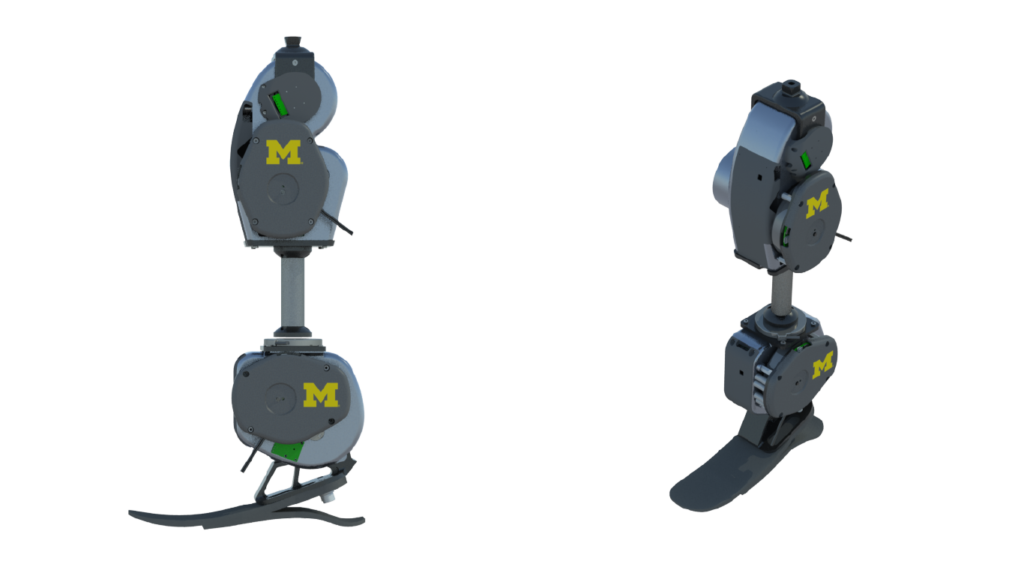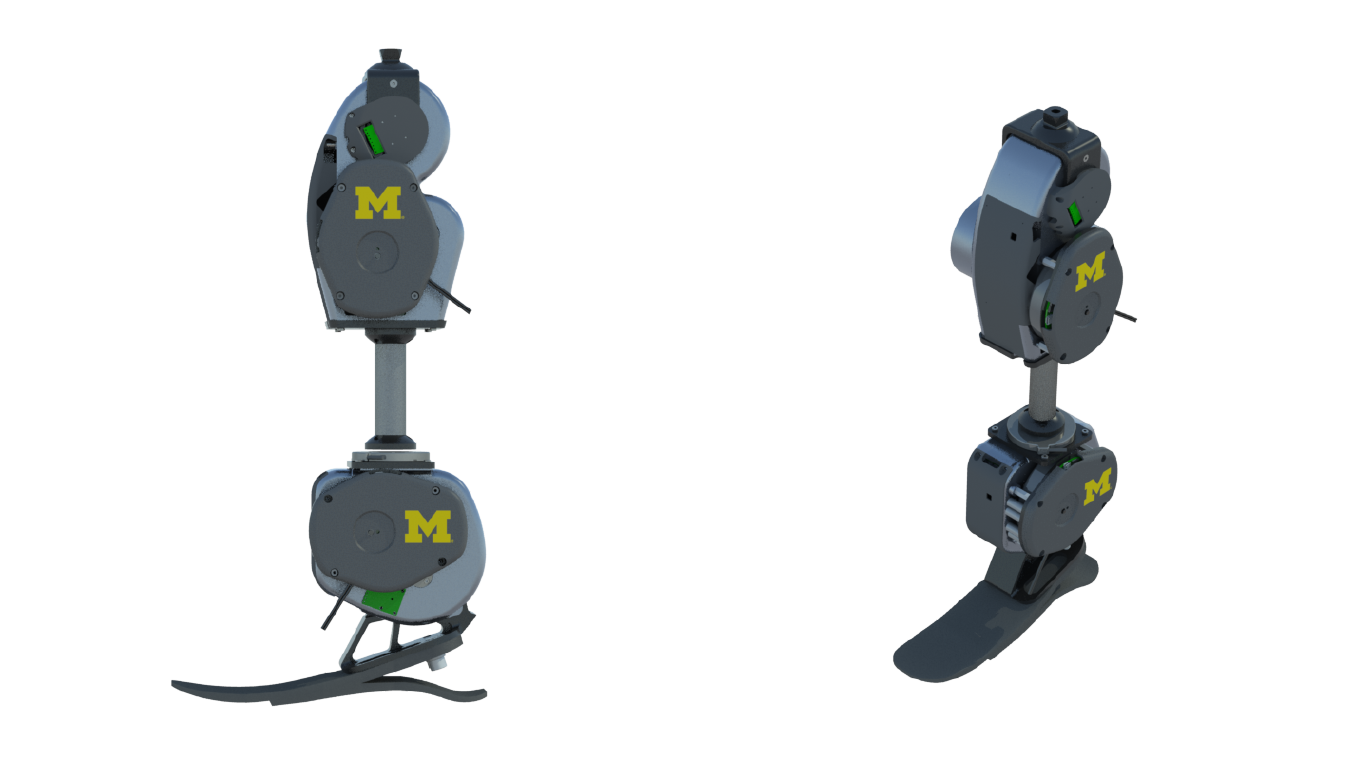
Robohub.org
251
Open Source Prosthetic Leg with Elliott Rouse


In this episode, Audrow Nash interviews Elliott Rouse, Assistant Professor at the University of Michigan, about an open-source prosthetic leg—that is a robotic knee and ankle. Rouse’s goal is to provide an inexpensive and capable platform for researchers to use so that they can work on prostheses without developing their own hardware, which is both time-consuming and expensive. Rouse discusses the design of the leg, the software interface, and the project’s timeline.
Elliott Rouse
 Elliott Rouse is an Assistant Professor in the Mechanical Engineering Department at the University of Michigan, where he directs the Neurobionics Lab. The vision of his group is to discover the fundamental science that underlies human joint dynamics during locomotion and incorporate these discoveries in a new class of wearable robotic technologies. The Lab uses technical tools from mechanical and biomedical engineering applied to the complex challenges of human augmentation, physical medicine, rehabilitation and neuroscience. Dr. Rouse and his research have been featured at TED, on the Discovery Channel, CNN, National Public Radio, Wired Magazine UK, Business Insider, and Odyssey Magazine.
Elliott Rouse is an Assistant Professor in the Mechanical Engineering Department at the University of Michigan, where he directs the Neurobionics Lab. The vision of his group is to discover the fundamental science that underlies human joint dynamics during locomotion and incorporate these discoveries in a new class of wearable robotic technologies. The Lab uses technical tools from mechanical and biomedical engineering applied to the complex challenges of human augmentation, physical medicine, rehabilitation and neuroscience. Dr. Rouse and his research have been featured at TED, on the Discovery Channel, CNN, National Public Radio, Wired Magazine UK, Business Insider, and Odyssey Magazine.
Links
- Rouse’s lab website
- Rouse’s personal website
- Download mp3 (12.6 MB)
- Subscribe to Robots using iTunes
- Subscribe to Robots using RSS
- Support us on Patreon
tags: bio-inspired, c-Research-Innovation, cx-Education-DIY, DIY, podcast, Prototype, Research




